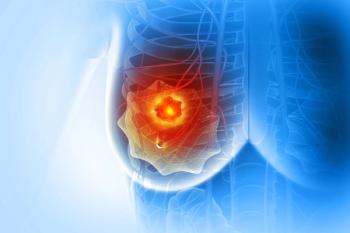
A Primary Dose of ChAdOx1-S Adenovirus-based Vaccine May Increase Thrombosis
The vaccine is suggested to cause more rare cases of thrombosis with thrombocytopenia syndrome than the mRNA-based vaccine, especially among younger individuals.
A primary dose of adenovirus-based vaccine ChAdOx1-S (Oxford-AstraZeneca) may increase risk of thrombocytopenia 30% more than a first dose of the mRNA-based vaccine, BNT162b2 (Pfizer-BioNTech).
“Although rare, the observed risks after adenovirus-based vaccines should be considered when planning further immunization campaigns and future vaccine development,” study authors said in the report which was published in the BMJ.
ChAdOx1-S has proven effective against severe infection and complications. However, some countries in Europe reported cases of thrombosis with thrombocytopenia syndrome following vaccination. Further, few prior studies had compared these risks among the different COVID-19 vaccines available.
Thrombosis is a condition that results in blood clots that may prevent arterial flow. The adenovirus-based vaccine may provoke this condition by stimulating an immune response that causes pathological platelet activating antibodies to develop.
The study aimed to quantify and compare the risk of thrombosis with thrombocytopenia syndrome (or thromboembolic events) when receiving an adenovirus-based COVID-19 vaccine versus an mRNA-based COVID-19 vaccine. They compared 2 adenovirus-based vaccines (ChAdOx1-S and Ad26.COV2. S) and 2 mRNA-based vaccines (BNT162b2 and mRNA-1273).
Participants were collected from databases in France, Germany, the Netherlands, Spain, the UK, and the United States. They collected data that included 4.6 million people who had received a single dose of ChAdOx1-S, and 10.6 million people who were vaccinated with a first dose of BNT162b2. Data from the UK showed that 862 patients experienced thrombocytopenia events from the ChAdOx1-S vaccine.
While researchers suggest that the risk of thrombosis and thrombocytopenia is rare and not significantly worse between the 2 vaccines, there is a “potential increased risk of venous thromboembolism with thrombocytopenia syndrome after vaccination with Ad26.COV2,” the study authors write.
According to a subgroup analysis, younger people in the United States, aged 20 to 29 years, had a 4-times increased risk of arterial thromboembolism after receiving the adenovirus-based Ad26.COV2 vaccine—but a separate subgroup analysis of men in the UK showed that the first dose of Ad26.COV2 actually lowered risk of arterial thromboembolism.
When stratifying for age, researchers wrote that there was “an increased risk of thrombocytopenia observed in those aged 40-49 years, 70-79 years, and among women in the UK data receiving first dose ChAdOx1-S compared with first dose BNT162b2.”
The study includes important limitations, the first being a heterogeneous pool of data. Another limitation includes information bias from potentially incomplete data. Further, the observational nature of the study may include confounding variables that could impact the final analysis. Finally, the database specific incidence rates of outcomes may be crude and not directly comparable.
“While we did not see large heterogeneity of incidence rates after vaccination between databases, relative rates varied,” study authors wrote in the report, encouraging more studies are needed to further investigate the issue.
Reference
Li X, Burn E, Duarte-Salles T, et al. Comparative risk of thrombosis with thrombocytopenia syndrome or thromboembolic events associated with different covid-19 vaccines: international network cohort study from five European countries and the US. BMJ. 2022;379:e071594. doi:10.1136/bmj-2022-071594
Newsletter
Stay informed on drug updates, treatment guidelines, and pharmacy practice trends—subscribe to Pharmacy Times for weekly clinical insights.


















































































































































































































